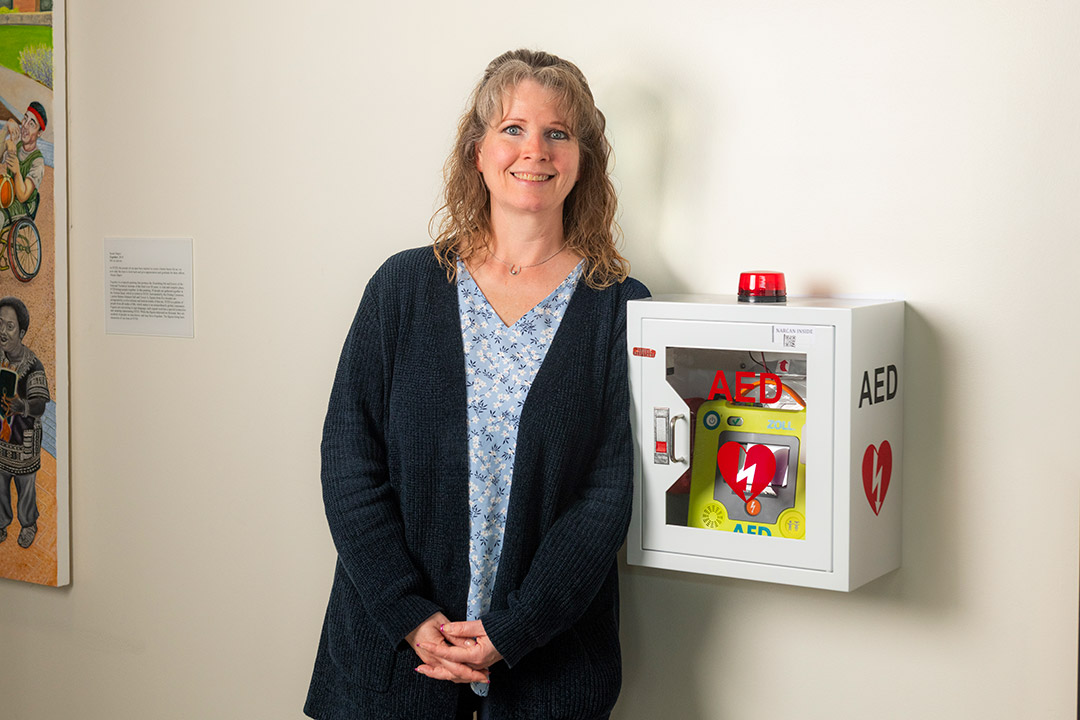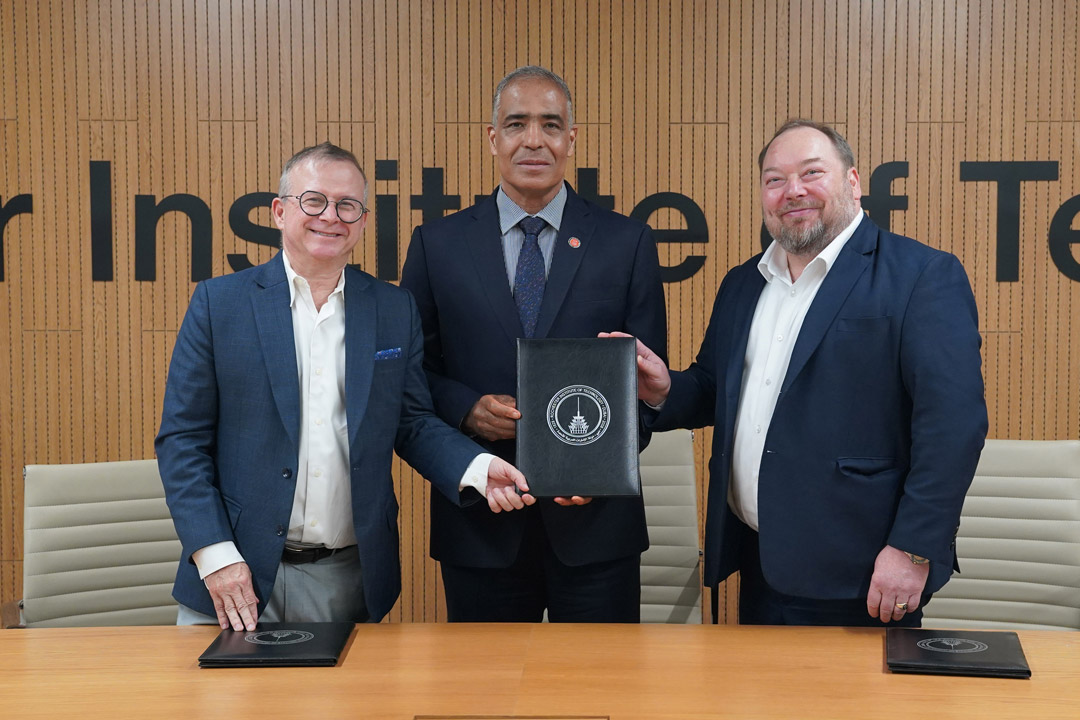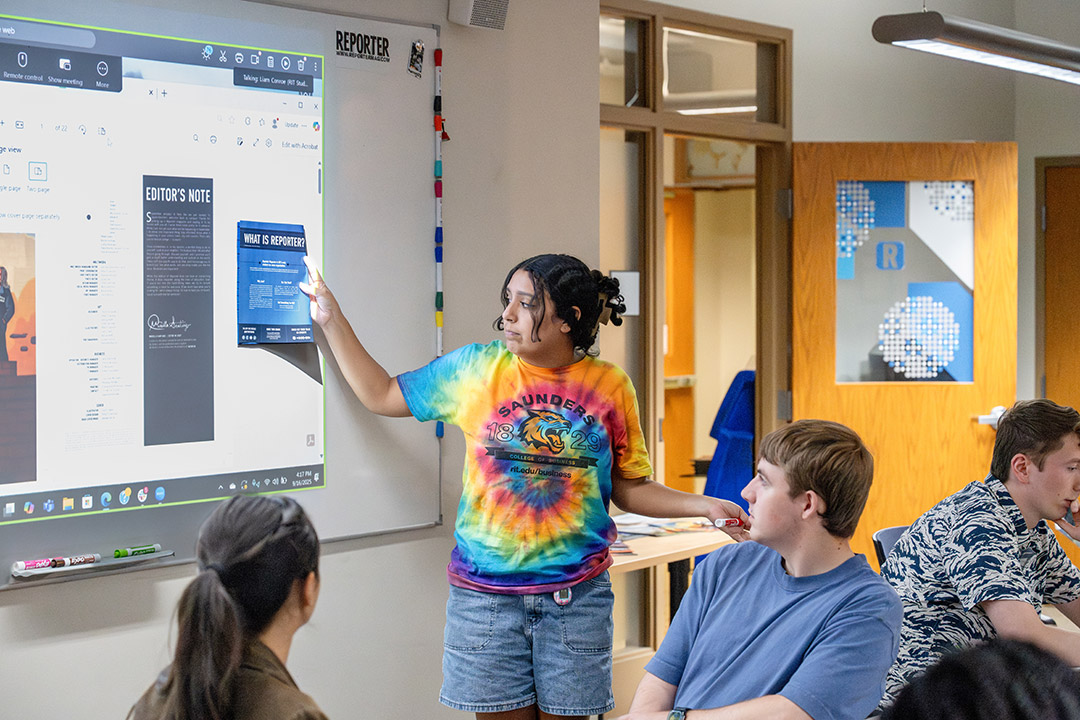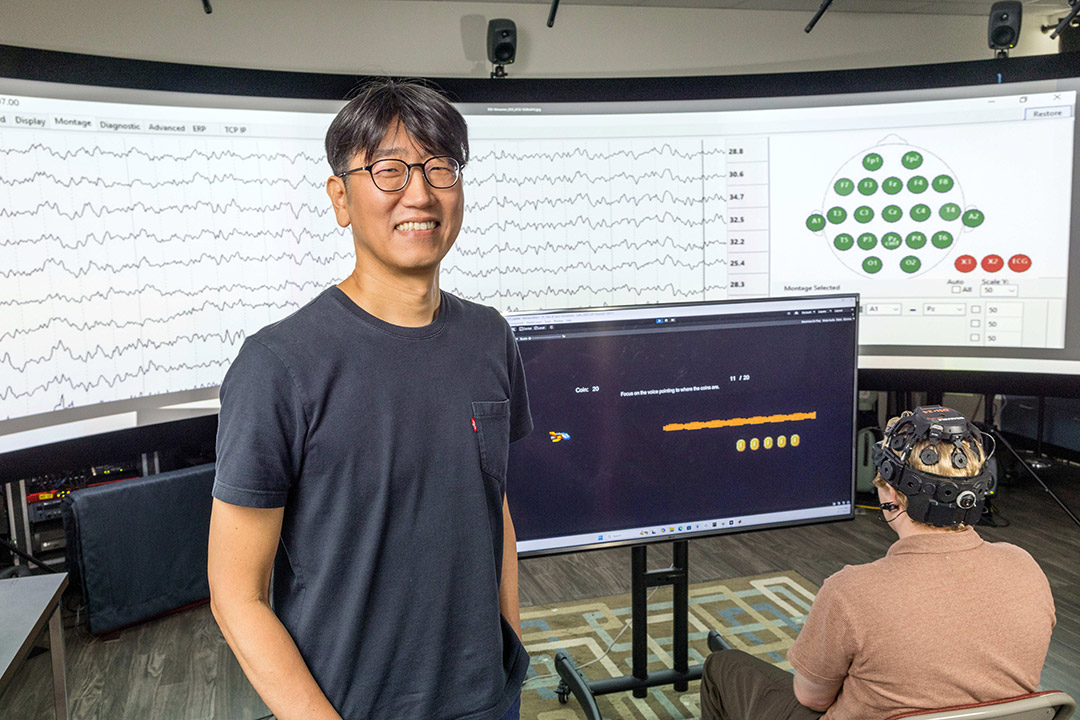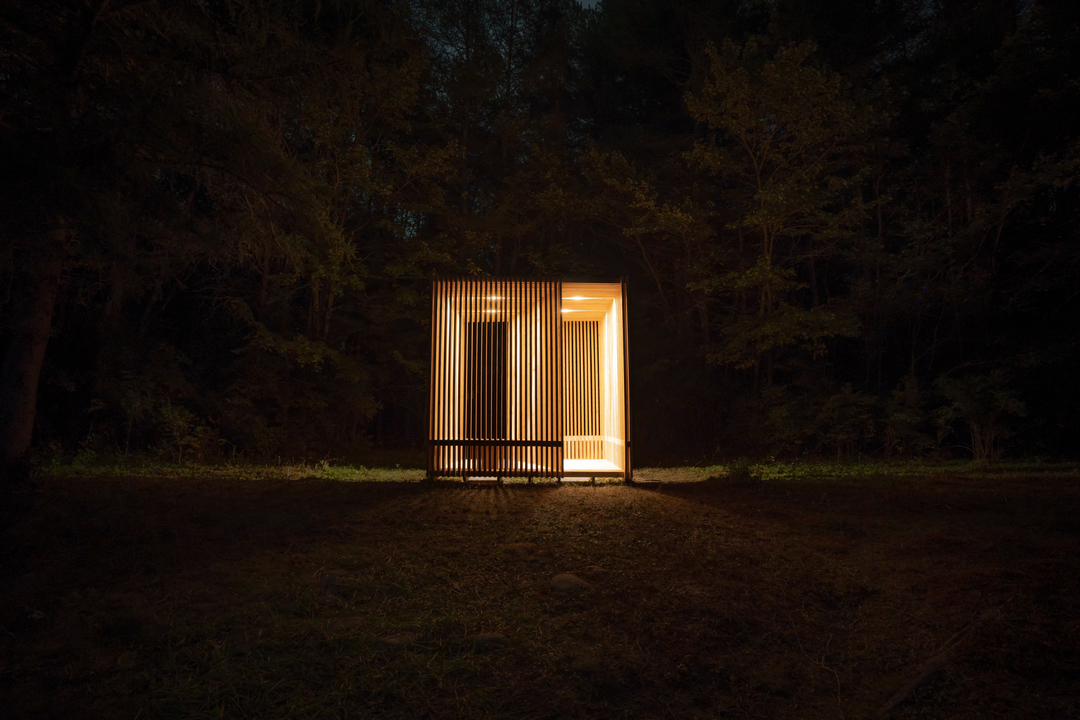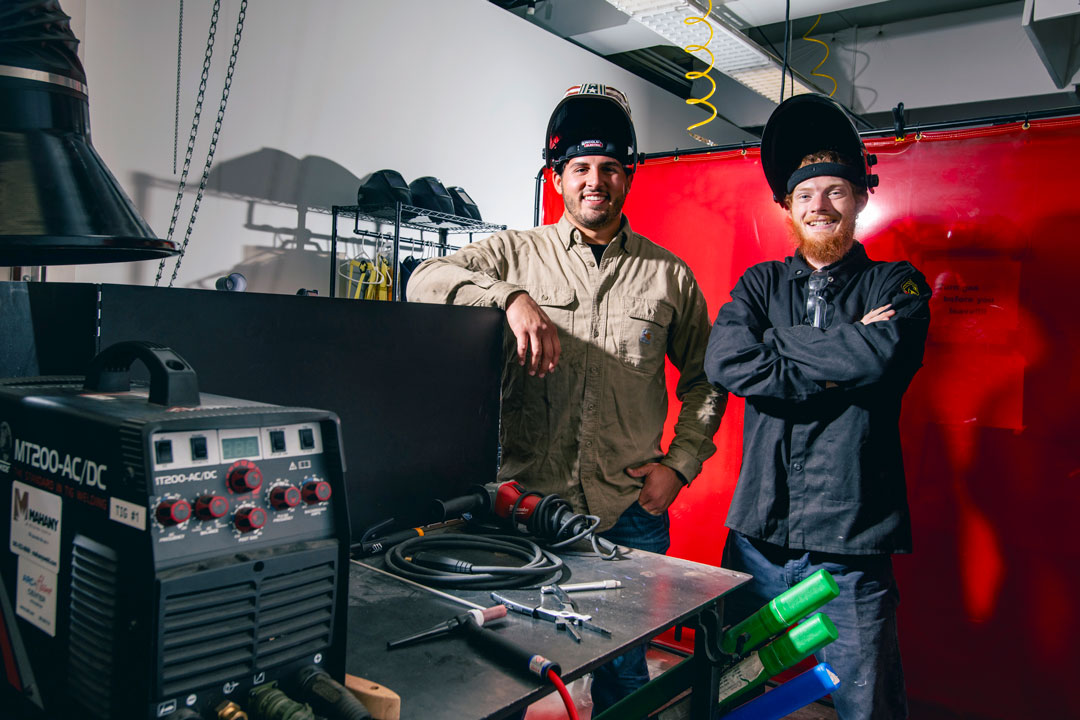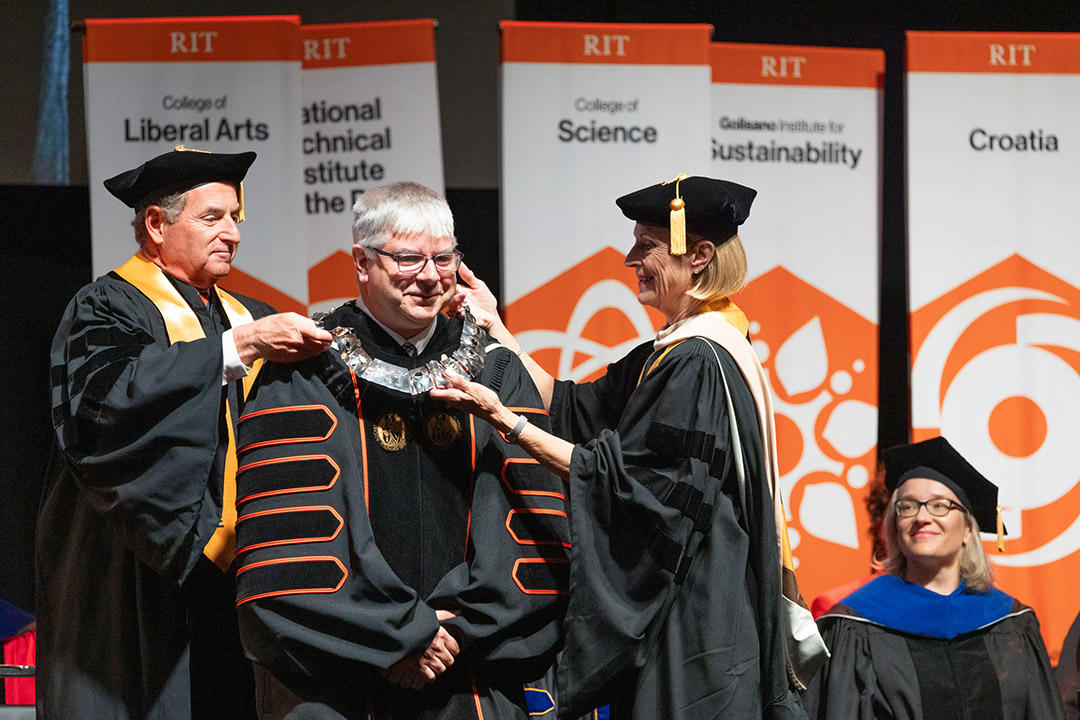Project team studied lifesaving AEDs that best suit deaf, hard-of-hearing users
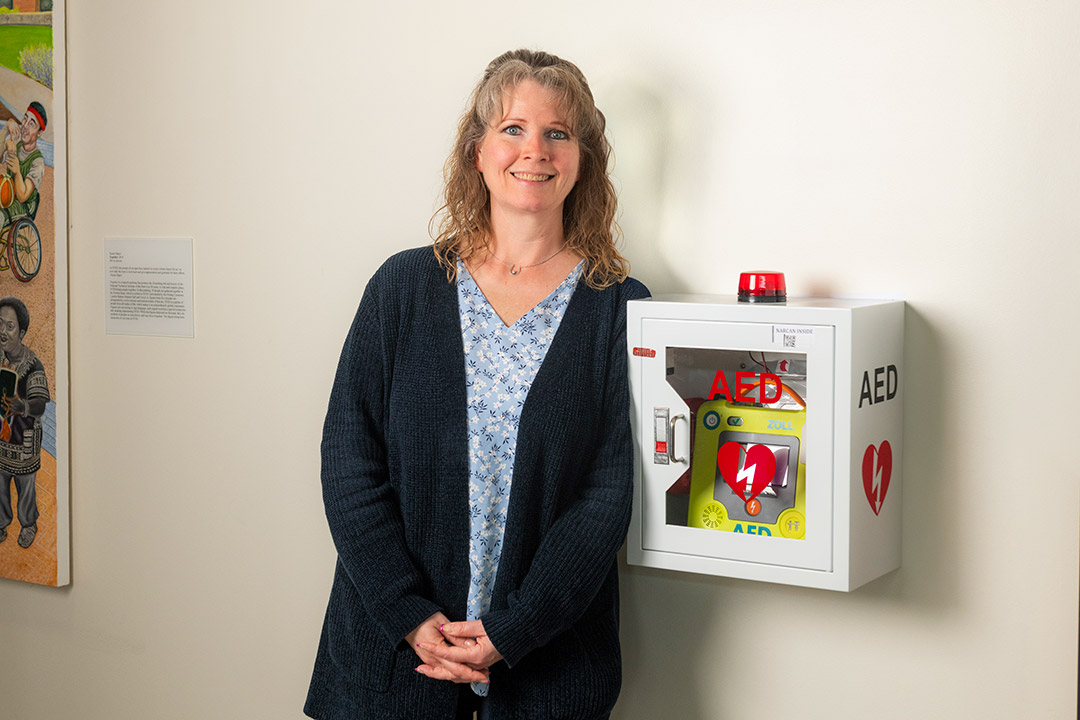
Matthew Sluka/RIT
Elizabeth Ayers is part of a team that was instrumental in researching AED machines that are accessible for deaf and hard-of-hearing users, and those not familiar with the English language. The accessible AEDs are in four locations across campus.
In emergencies, Automated External Defibrillators (AEDs) help restore life until first responders arrive by giving users auditory prompts to operate the machines. But audio prompts and descriptions are virtually useless for deaf and hard-of-hearing individuals who may need to use AEDs to help save a life.
Researchers from RIT’s National Technical Institute for the Deaf have identified an AED that includes visual and text prompts, making it accessible for deaf and hard-of-hearing users and those not familiar with the English language. As a result, accessible AED machines are now available at four campus locations: the first floor of Lyndon Baines Johnson Hall, Student Development Center, Hugh L. Carey Hall, and in a student residence—Ellingson Hall Tower A. Remaining units throughout campus will be replaced with accessible AEDs at end of life.
“It’s terrific that AED machines have become widely available, including at RIT, but I’m deaf and what if I was alone and needed to use it on someone?” said Elizabeth Ayers, senior lecturer in NTID’s Department of Science and Mathematics and a licensed clinical sonographer. “I can’t hear the auditory descriptors such as the beeps and other background sounds, and neither can the hundreds of other deaf and hard-of-hearing people on our campus. We knew that something needed to be done in order to make these lifesaving machines user-friendly for just about anyone here.”
Ayers and Wendy Dannels, research associate professor; Tiffany Panko, executive director of NTID’s Deaf Hub; and alumnus Menna Nicola ’25 (human-centered computing) worked as a team to investigate FDA-approved devices that portrayed the most visually accurate instructions and imagery. Thirty-two devices from seven manufacturers were examined. Of these, three models were identified as meeting accessibility criteria. RIT selected one for replacement and deployment across campus, with the guidance of Christopher Knigga, director of Facilities Services and Sustainability at NTID, and Jody Nolan, RIT’s manager of Environmental Health and Safety.
Nicola, an associate IT analyst at Dow Chemical, was a student when the research began.
“I didn’t really know much about AEDs before this project began, but I was thrilled at the opportunity to conduct research that directs impacts me and other deaf people,” she said. “The most enjoyable part of the project for me was the result that led to finding a great match for an accessible AED for deaf and hard-of-hearing individuals.”
According to Ayers, next steps include reaching out to other schools, agencies, and organizations focused on deaf and hard-of-hearing individuals to share their research on the accessible AEDs.
“RIT was on board with installing these accessible AEDs based on our work,” said Ayers. “It’s our team’s responsibility to be sure that other organizations know the options that are available to them. And hopefully, to take this one step further, manufacturers will continue to work alongside deaf researchers to develop and continually innovate other healthcare products that are fully accessible.”



